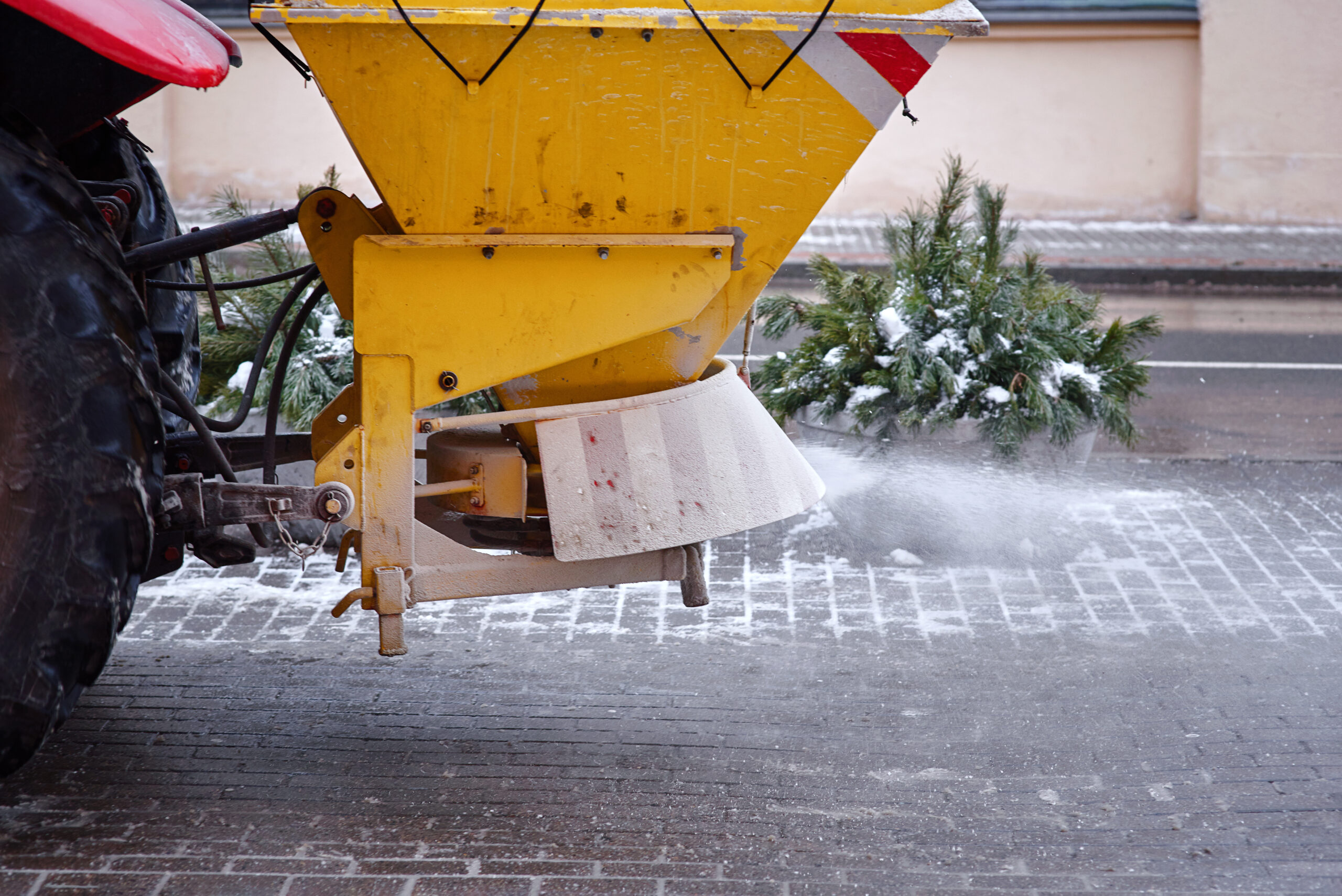Can You Use Recycled Asphalt Commercially?
Asphalt costs are rising, project timelines are tightening, and sustainability goals are front and center. That’s why more commercial property owners and facility managers are exploring recycled asphalt—also known as reclaimed asphalt pavement (RAP). When installed correctly, it offers durability, speed, and long-term value at a fraction of the cost of traditional hot mix.
Once viewed as a temporary or base-only solution, RAP is now holding its own in full-surface commercial applications—from trucking yards to access roads. But like any material, performance depends on installation quality, site prep, and matching the surface to the property’s demands.
Why Recycled Asphalt Appeals to Commercial Projects
Recycled asphalt is an increasingly attractive choice for commercial properties due to its affordability and environmental benefits. Since RAP reuses aggregate and bitumen from old pavement, it reduces raw material costs significantly. For sites managing large lots, truck lanes, or equipment yards, this can make a real difference in the project budget.
- Lower material and hauling costs
- Faster installation timelines
- Reduced landfill waste and new material consumption
One contractor in Texas resurfaced a large trucking yard using RAP. The client was hesitant at first but agreed to test one section. Six months later, impressed by how it held up under daily truck traffic, they greenlit the full lot. Several years in, that surface is still going strong with minimal maintenance.
Durability and Load Handling
Recycled asphalt can support light to moderate commercial traffic when correctly installed. Simply dumping and spreading millings won’t hold up under forklifts or delivery trucks. Proper grading, moisture conditioning, and compaction—often with a binding agent—are essential.
- Graded and compacted RAP becomes dense and load-bearing
- Rejuvenators or emulsified asphalt can improve bonding
- Once compacted, the surface resists rutting and deformation under heavy use
For lower-speed, high-weight zones like storage yards or perimeter drives, RAP performs surprisingly well when treated as a true paving material—not just fill.
Faster Turnaround and Greater Flexibility
Unlike traditional asphalt, which requires plant coordination and temperature-specific scheduling, RAP offers flexibility and speed. It can be delivered, spread, and compacted the same day, which matters for time-sensitive commercial projects like:
- Warehouse expansions
- Distribution hub remodels
- Equipment staging areas
Because RAP can be stored and reused, it’s ideal for patching and extending existing areas. Crews can recompact small sections or add to a drive lane without creating major visual or structural differences—ideal for evolving commercial layouts.
Performance in Different Climates
Recycled asphalt adapts well to a variety of climates, especially when installed over a properly prepared base. In colder areas, it handles freeze-thaw cycles with less cracking than traditional asphalt, and in hot climates, it expands and contracts without shifting as much as concrete.
A project in Arizona initially ran into drainage problems when the sub-base was improperly compacted. Once the grading and slope were corrected, the RAP surface held up through extreme summer heat and flash floods.
- Cold regions: Resists frost heave and compacts under traffic
- Hot regions: Tolerates thermal expansion without surface breakage
- Dry climates: Minimal dust compared to gravel or dirt surfaces
The ability of RAP to continue compacting under use makes it particularly effective in commercial lots that see high weight but low speed.
Drainage and Site Prep Matter
As with any surfacing material, recycled asphalt is only as strong as the base beneath it. Poor drainage will cause even the most well-compacted RAP to fail. Proper site prep is essential.
- Install a stable aggregate base layer
- Use geotextile fabric to improve separation and reduce erosion
- Ensure proper grading and slope for water runoff
Some commercial clients try to cut costs on prep, assuming RAP’s savings will cover the difference. That shortcut often leads to water damage, rutting, and the need to regrade or resurface sooner than expected.
Appearance and Visual Considerations
One common hesitation around RAP is its industrial appearance. Compared to fresh asphalt, recycled material is rougher and lighter in color, which may not match the aesthetics of retail centers or high-visibility entrances.

- Surface can appear dusty or uneven without sealant
- Color may vary based on source material
That said, appearance can be improved with a seal coat or thin hot mix overlay. This hybrid approach provides the strength and savings of RAP with the darker, uniform look of traditional asphalt.
Local Regulations and Compliance
RAP isn’t universally accepted as a top-layer surface in all jurisdictions. Local codes may require hot mix or concrete in certain commercial applications—especially those tied to ADA compliance, stormwater drainage plans, or high-traffic public access areas.
- Some cities allow RAP only as a base layer
- Others approve it for storage lots, utility yards, or restricted access drives
Before committing, property managers should check local regulations to avoid costly redesigns or permit issues later in the process.
Environmental and Sustainability Benefits
Recycled asphalt aligns with sustainability goals many commercial clients are aiming to meet. It diverts waste from landfills and reduces the demand for new aggregates and binders, which lowers a project’s carbon footprint.
- Supports LEED points in construction planning
- Reduces emissions from quarrying and asphalt production
- Helps companies demonstrate environmental responsibility
One storage facility in Georgia switched to RAP for all internal drive lanes. Not only did it reduce their materials cost, but the site also saw a drop in dust, improved traction, and better performance under plows in winter. RAP resisted tear-up better than gravel, which reduced both clean-up time and ongoing repair costs.
When Recycled Asphalt Isn’t the Right Fit
RAP has its limits. For properties that require smooth surfaces, precise elevations, or a highly polished finish—like retail storefronts or ADA-accessible ramps—hot mix asphalt or concrete may still be the better option.
- RAP isn’t ideal for decorative or tightly graded areas
- It can soften under prolonged exposure to oils, grease, or chemicals
- High-friction turning zones may wear faster if installation is poor
Forklift staging areas, loading docks with high lateral stress, and sites exposed to frequent spills may need a sealed or alternative surface to prevent damage.
Choosing the Right Contractor
The success of any RAP installation hinges on proper site prep and compaction. Not every contractor has the tools or experience to do it right. General paving crews may treat RAP like gravel, leading to short-term results that don’t hold up.
When considering a contractor for commercial RAP use:
- Ask for examples of similar completed projects
- Ensure they use proper rollers, graders, and additives
- Confirm they conduct compaction and slope assessments
- Avoid crews who skip base preparation or try to cut corners
Choosing the right partner ensures your cost savings won’t turn into repair bills a few months later.
National Facility Contractors helps commercial clients evaluate whether recycled asphalt is the right fit—and ensure it’s installed to spec, with no shortcuts on grading, compaction, or drainage.
Final Thoughts: Is Recycled Asphalt Commercially Viable?
Recycled asphalt has earned its place in commercial site development. For access roads, truck yards, laydown areas, and storage lots, it offers meaningful savings, fast installation, and strong durability—when installed correctly.
It’s not about cutting corners—it’s about making smart decisions based on your site’s traffic load, climate, and long-term goals. When paired with the right prep and the right contractor, recycled asphalt isn’t just viable—it’s a smarter, more sustainable solution for today’s commercial demands.






